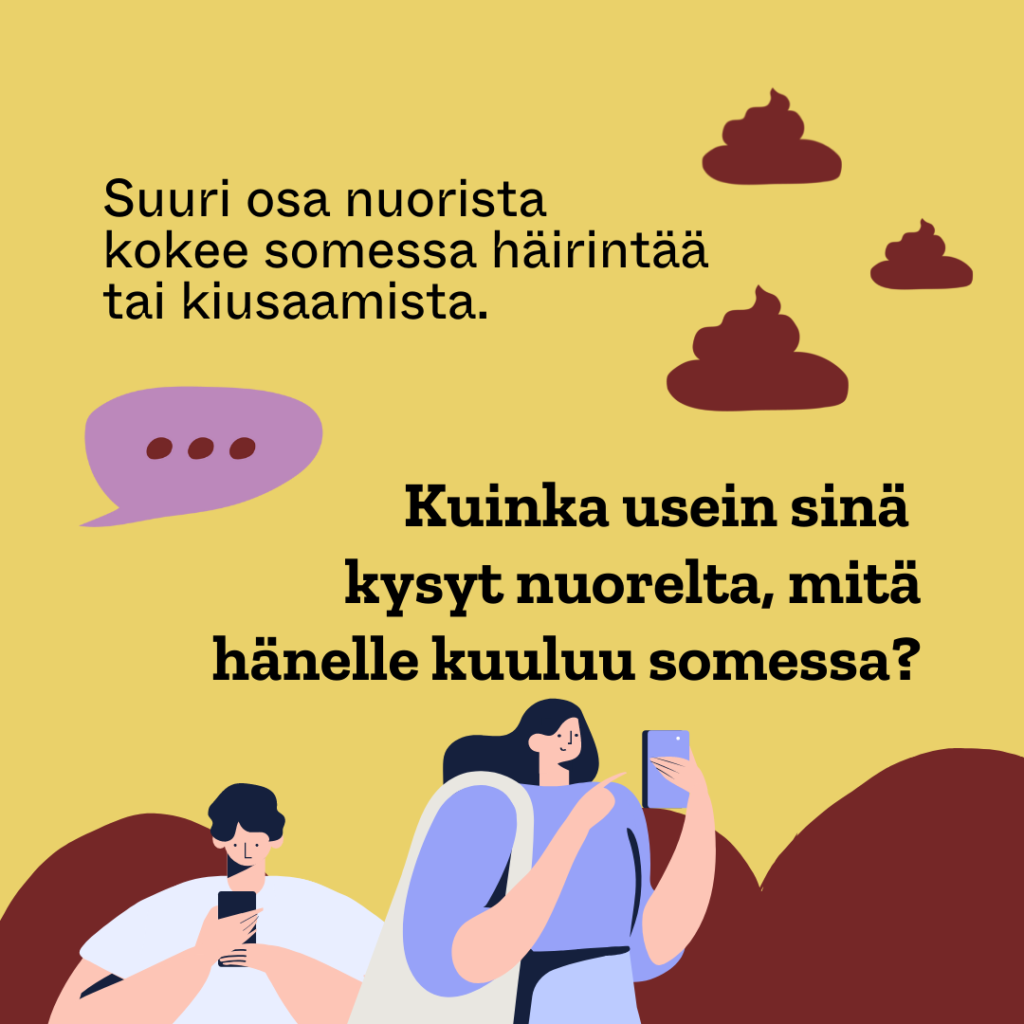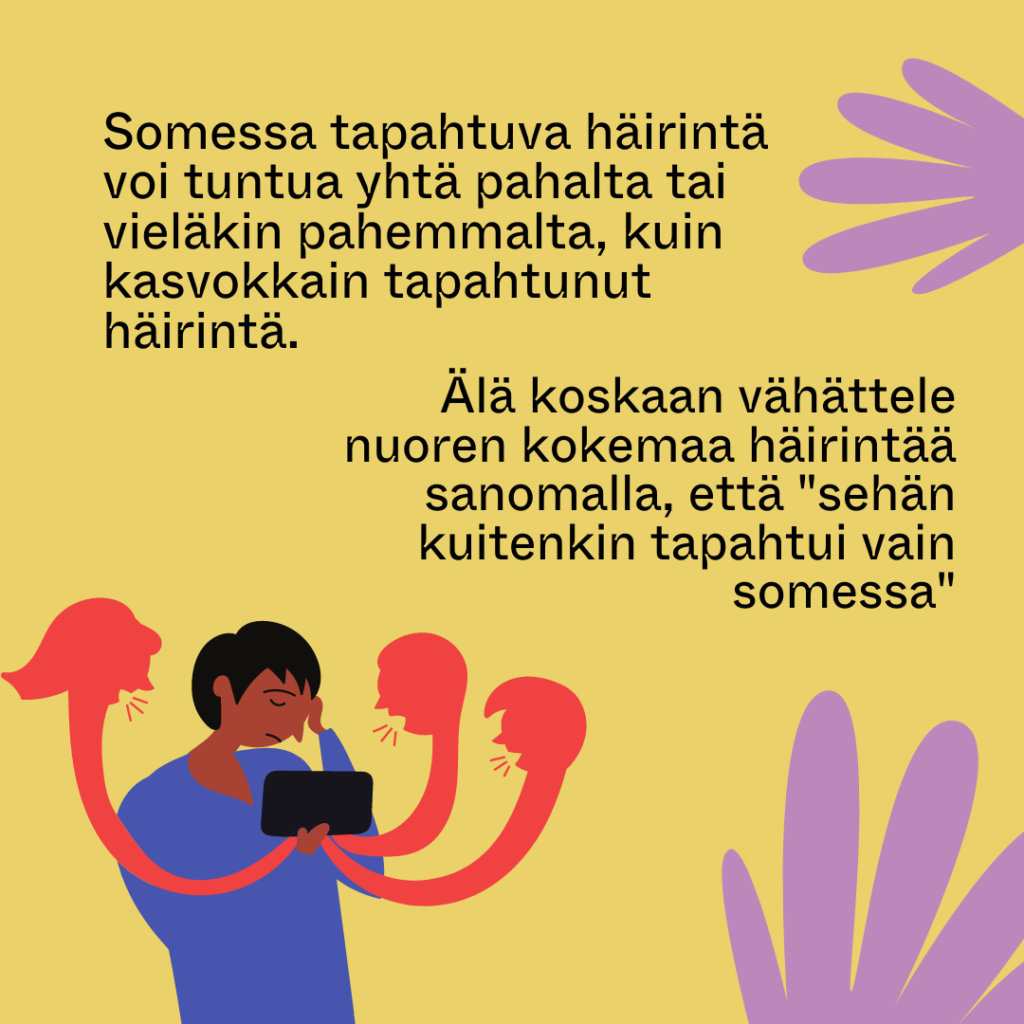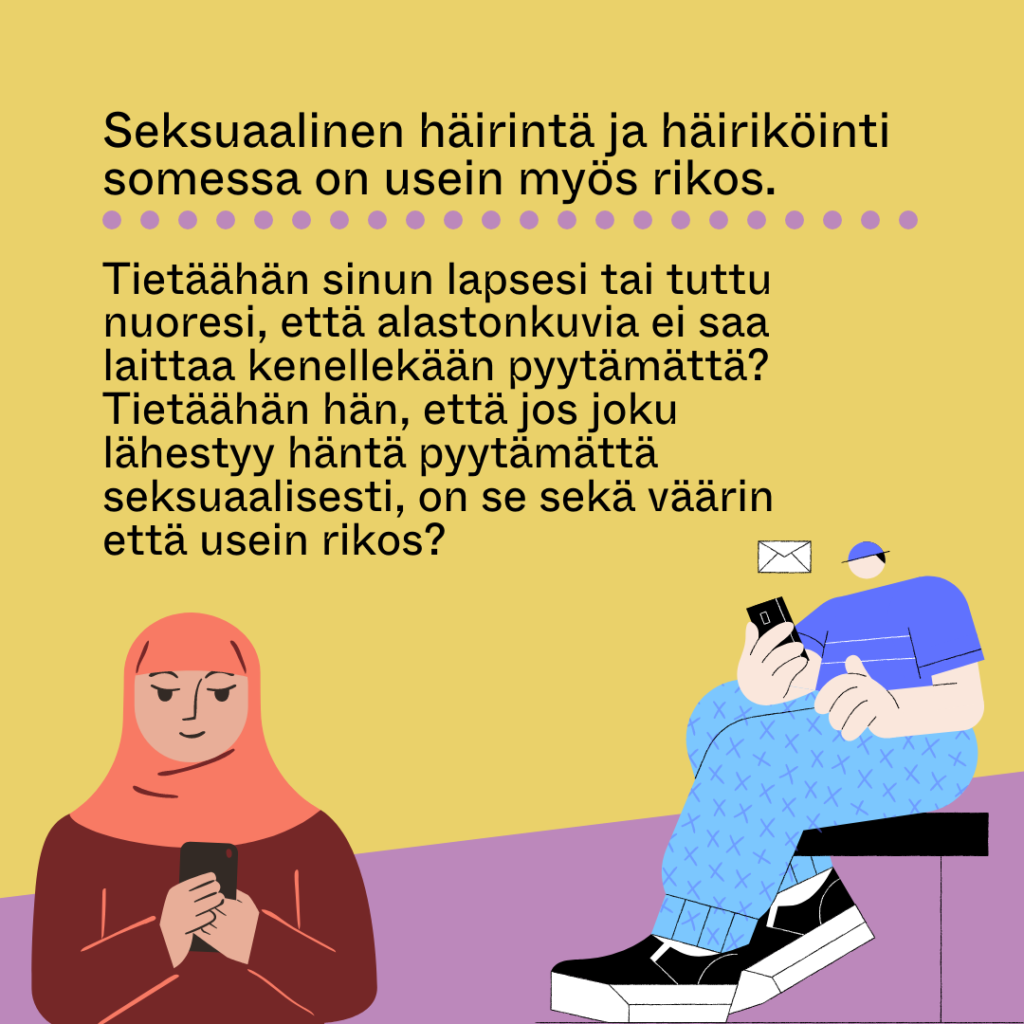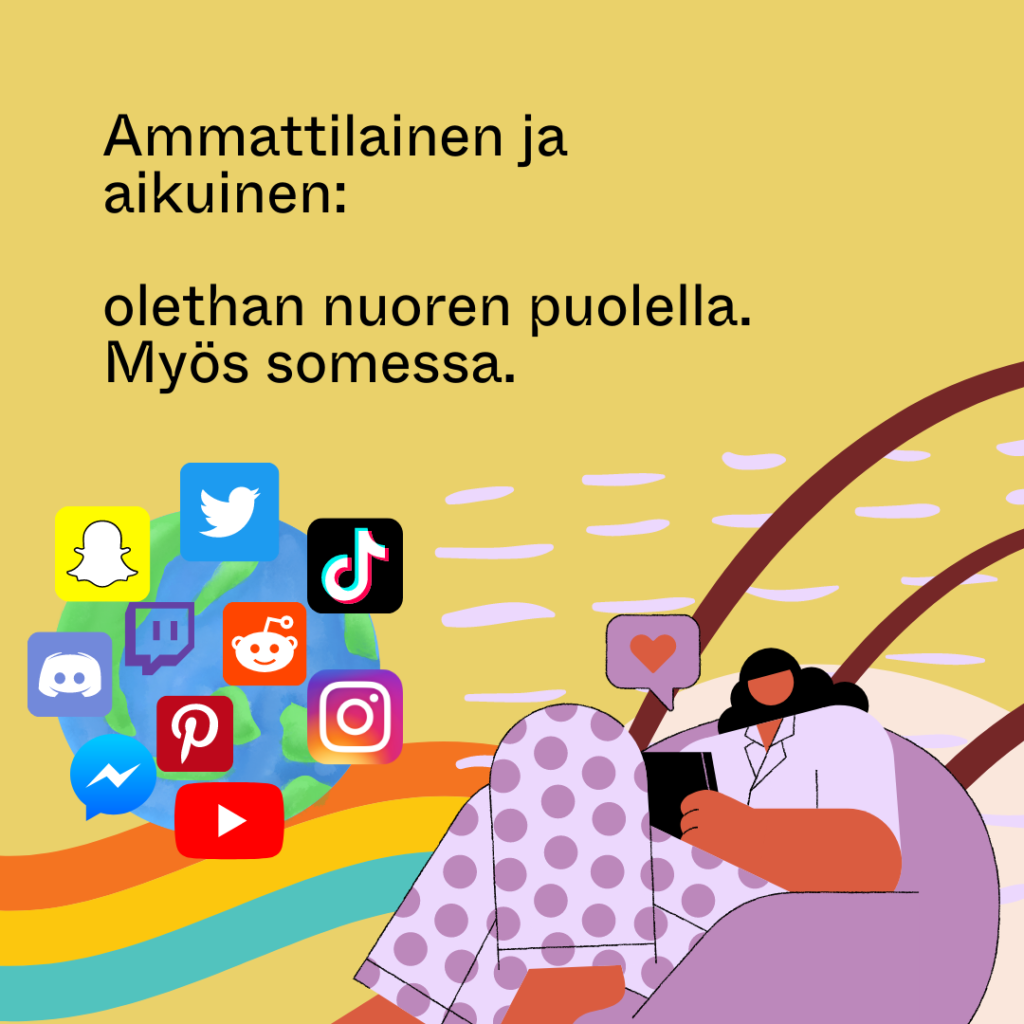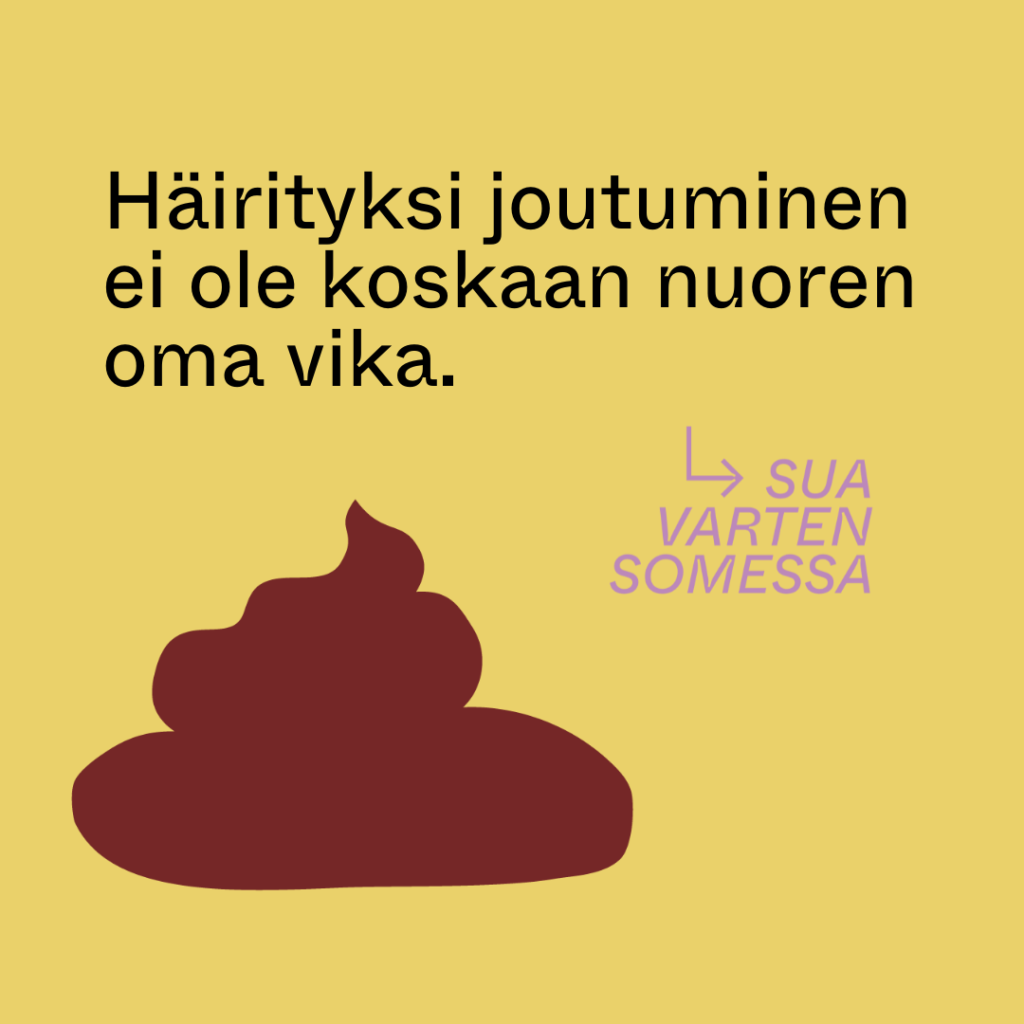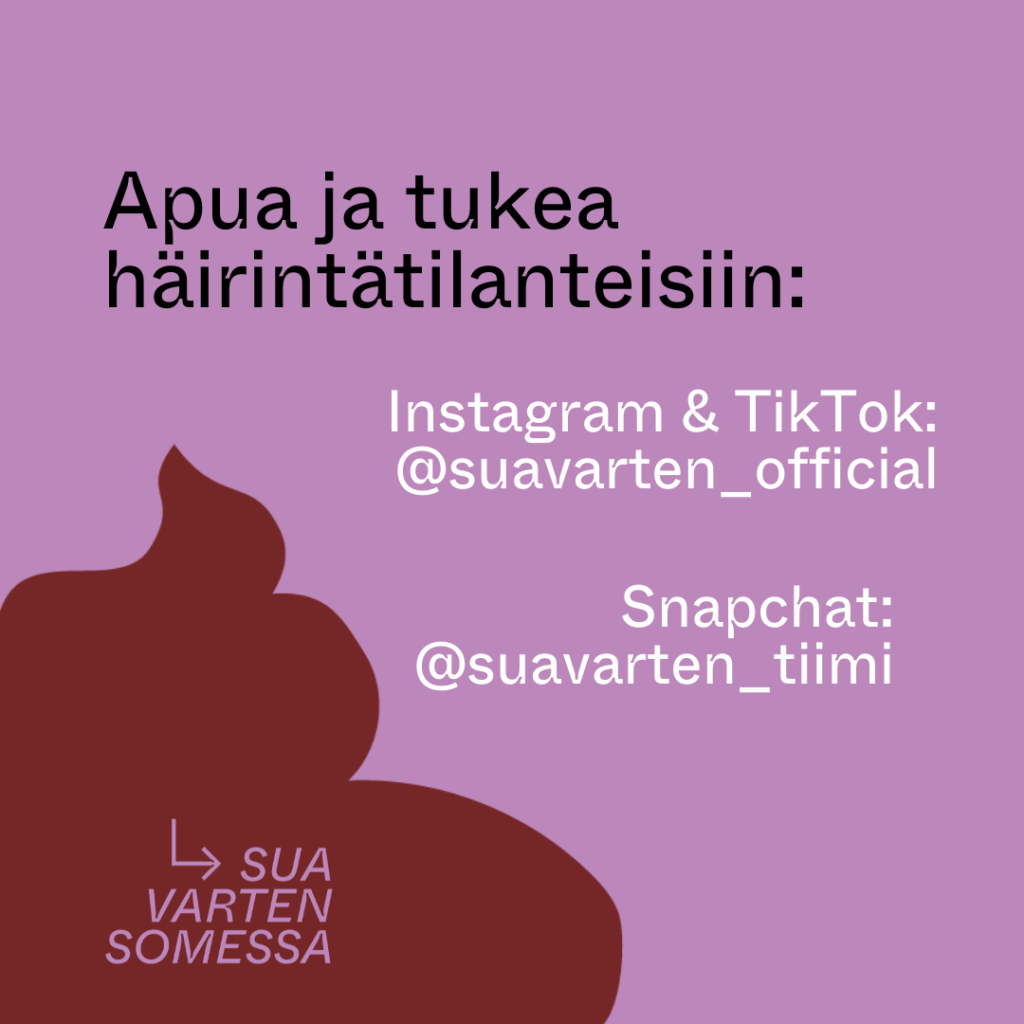Harassment
Harassment on social media
Harassment on social media is regrettably common nowadays. According to school health surveys, almost half of girls aged 14 to 19 have experienced it. Boys and children of elementary school age also experience harassment. Among other things, harassment can involve spreading gossip, name-calling, sending harassing messages, sending nude photos to a child/youth or asking a child/youth for nude photos. Harassment can also meet the definition of a crime, and a criminal complaint can be filed.
Social media cannot and should not be banned from young people, but it is good to go through the rules of the game together. Learn to use social media safely together as early as possible. It is important for children and young people to know that they can tell an adult if something happens.
The images below are from the Sua varten somessa (For you on social media) project of Loisto Setlementti and Nicehearts ry. More information and materials (in Finnish): https://suavartensomessa.fi
Image 1. A large proportion of young people experience harassment or bullying on social media. How often do you ask a young person what they are up to on social media?
Image 2. Harassment on social media can feel just as bad or even worse than face-to-face harassment. Never play down the harassment experienced by a young person by saying that “it only happened on social media”.
Image 3. Sexual harassment on social media is often also a crime. Is your child or a young person you know aware that you should not post nude photos to anyone without asking? Or that if someone approaches them sexually without asking, it is both wrong and also often a crime?
Image 4. Professionals and adults: Take the side of the young person. Also on social media.
Image 5. Being harassed is never the young person’s own fault.
Image 6. Help and support in harassment situations: Instagram & TikTok: @suavarten_official, Snapchat: @suavarten_tiimi
